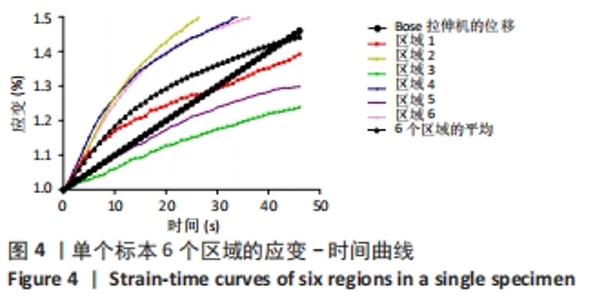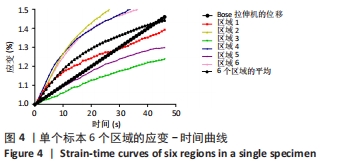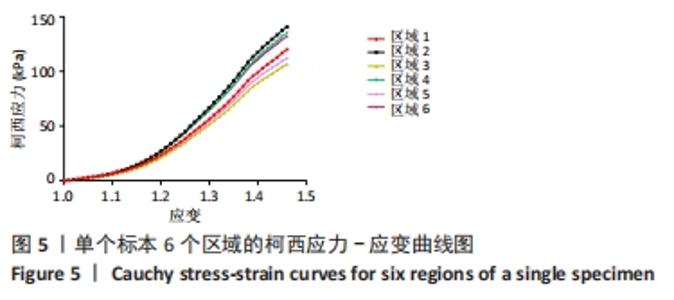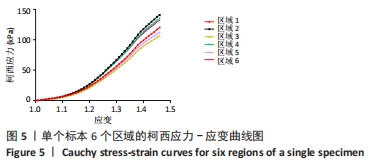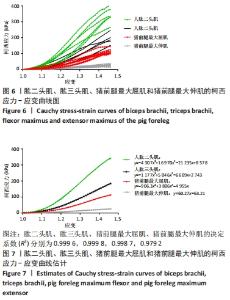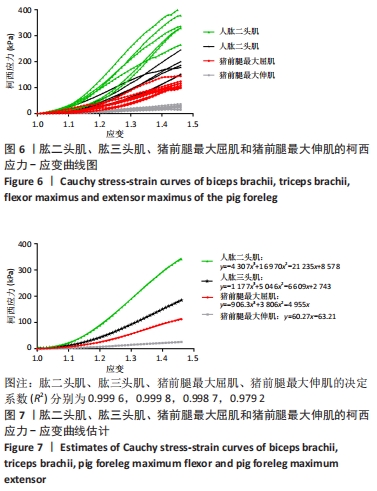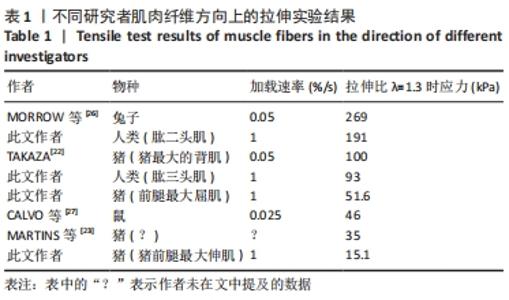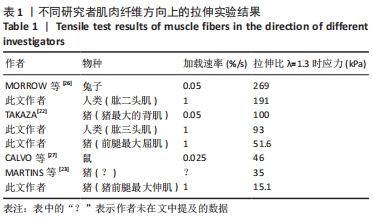[1] FRONTERA WR, OCHALA J. Skeletal muscle: a brief review of structure and function. Calcif Tissue Int. 2015;96(3):183-195.
[2] MAYEUF-LOUCHART A, STAELS B, DUEZ H. Skeletal muscle functions around the clock. Diabetes Obes Metab. 2015;17 Suppl 1:39-46.
[3] SANDAGE MJ, SMITH AG. Muscle Bioenergetic Considerations for Intrinsic Laryngeal Skeletal Muscle Physiology. J Speech Lang Hear Res. 2017;60(5):1254-1263.
[4] RUDROFF T. Functional capability is enhanced with semitendinosus than patellar tendon ACL repair. Med Sci Sports Exerc. 2003;35(9): 1486-1492.
[5] SHEEAN AJ, MUSAHL V, SLONE HS, et al. Quadriceps tendon autograft for arthroscopic knee ligament reconstruction: use it now, use it often. Br J Sports Med. 2018;52(11):698-701.
[6] 刘英男,庄永青,魏瑞鸿,等.功能性游离肌肉移植重建部分上肢功能的临床应用[J].中国临床解剖学杂志,2020,38(4):461-466.
[7] PAMUK U, KARAKUZU A, OZTURK C, et al. Combined magnetic resonance and diffusion tensor imaging analyses provide a powerful tool for in vivo assessment of deformation along human muscle fibers. J Mech Behav Biomed Mater. 2016;63:207-219.
[8] 李凭跃,尹庆水,黄华扬,等.静态加载时肌力对膝关节稳定性的影响[J].南方医科大学学报,2010,30(12):2625-2628.
[9] HYMAN SA, NORMAN MB, DORN SN, et al. In vivo supraspinatus muscle contractility and architecture in rabbit. J Appl Physiol (1985). 2020;129(6):1405-1412.
[10] MURPHY AC, MULDOON SF, BAKER D, et al. Structure, function, and control of the human musculoskeletal network. PLoS Biol. 2018;16(1): e2002811.
[11] GOETHEL MF, GONÇALVES M, BRIETZKE C, et al. A global view on how local muscular fatigue affects human performance. Proc Natl Acad Sci U S A. 2020;117(33):19866-19872.
[12] ZHOU X, NOWICKI M, SUN H, et al. 3D Bioprinting-Tunable Small-Diameter Blood Vessels with Biomimetic Biphasic Cell Layers. ACS Appl Mater Interfaces. 2020;12(41):45904-45915.
[13] BROWN SH, GREGORY DE, CARR JA, et al. ISSLS prize winner: Adaptations to the multifidus muscle in response to experimentally induced intervertebral disc degeneration. Spine (Phila Pa 1976). 2011; 36(21):1728-1736.
[14] GSELL KY, ZWAMBAG DP, FOURNIER DE, et al. Paraspinal Muscle Passive Stiffness Remodels in Direct Response to Spine Stiffness: A Study Using the ENT1-Deficient Mouse. Spine (Phila Pa 1976). 2017; 42(19):1440-1446.
[15] SATO EJ, KILLIAN ML, CHOI AJ, et al. Skeletal muscle fibrosis and stiffness increase after rotator cuff tendon injury and neuromuscular compromise in a rat model. J Orthop Res. 2014;32(9):1111-1116.
[16] XIAO Y, WANG C, SUN Y, et al. Quantitative Estimation of Passive Elastic Properties of Individual Skeletal Muscle in Vivo Using Normalized Elastic Modulus-Length Curve. IEEE Trans Biomed Eng. 2020;67(12): 3371-3379.
[17] SUN Y, XIAO Y, LI F, et al. Diagnosing Muscle Atrophy by Use of a Comprehensive Method of Assessing the Elastic Properties of Muscle During Passive Stretching. AJR Am J Roentgenol. 2020;214(4):862-870.
[18] LEE AH, ELLIOTT DM. Freezing does not alter multiscale tendon mechanics and damage mechanisms in tension. Ann N Y Acad Sci. 2017;1409(1):85-94.
[19] QUIRK NP, LOPEZ DE PADILLA C, DE LA VEGA RE, et al. Effects of freeze-thaw on the biomechanical and structural properties of the rat Achilles tendon. J Biomech. 2018;81:52-57.
[20] 张永虎,宋国栋,左海斌,等.人、猪、大鼠来源网状层真皮组织学及材料学表征的比较[J].中国组织工程研究,2014,18(47):7608-7614.
[21] BAAH-DWOMOH A, ALPERIN M, COOK M, et al. Mechanical Analysis of the Uterosacral Ligament: Swine vs. Human. Ann Biomed Eng. 2018; 46(12):2036-2047.
[22] TAKAZA M, MOERMAN KM, GINDRE J, et al. The anisotropic mechanical behaviour of passive skeletal muscle tissue subjected to large tensile strain. J Mech Behav Biomed Mater. 2013;17:209-220.
[23] MARTINS PALS, NATAL JORGE RM, FERREIRA AJM. A Comparative Study of Several Material Models for Prediction of Hyperelastic Properties: Application to Silicone-Rubber and Soft Tissues. Strain. 2006;42(3): 135-147.
[24] PATEL B, CHEN H, AHUJA A, et al. Constitutive modeling of the passive inflation-extension behavior of the swine colon. J Mech Behav Biomed Mater. 2018;77:176-186.
[25] PASHAKHANLOO F, HERZKA DA, ASHIKAGA H, et al. Myofiber Architecture of the Human Atria as Revealed by Submillimeter Diffusion Tensor Imaging. Circ Arrhythm Electrophysiol. 2016;9(4):e004133.
[26] MORROW DA, HAUT DONAHUE TL, ODEGARD GM, et al. Transversely isotropic tensile material properties of skeletal muscle tissue. J Mech Behav Biomed Mater. 2010;3(1):124-129.
[27] CALVO B, RAMÍREZ A, ALONSO A, et al. Passive nonlinear elastic behaviour of skeletal muscle: experimental results and model formulation. J Biomech. 2010;43(2):318-325.
[28] 邢飞,马剑雄,马信龙.软组织生物力学特性研究进展[J].中华骨科杂志,2017,37(22):1432-1440.
[29] REHORN MR, SCHROER AK, BLEMKER SS. The passive properties of muscle fibers are velocity dependent. J Biomech. 2014;47(3):687-693.
[30] TAMURA A, HAYASHI S, MATSUMOTO T. Effect of loading rate on viscoelastic properties and local mechanical heterogeneity of freshly isolated muscle fiber bundles subjected to uniaxial stretching. J Mech Behav Biomed Mater. 2016;16(6):1650086.
[31] SONG B, SONG B, SYN CJ, et al. A Long Split Hopkinson Pressure Bar (LSHPB) for Intermediate-rate Characterization of Soft Materials. Exp Mech. 2008;48(6):809-815.
[32] CHEN WW. Experimental Methods for Characterizing Dynamic Response of Soft Materials. J Dynamic Behavior Mater. 2016;2(1):2-14.
[33] SMITH MV, CASTILE RM, BROPHY RH, et al. Mechanical Properties and Microstructural Collagen Alignment of the Ulnar Collateral Ligament During Dynamic Loading. Am J Sports Med. 2019;47(1):151-157.
[34] STEEL S, AXIAL C, APPLICATION F. E8/E8M Standard Test Methods for Tension Testing of Metallic Materials. 2011.
[35] WHEATLEY BB, MORROW DA, ODEGARD GM, et al. Skeletal muscle tensile strain dependence: Hyperviscoelastic nonlinearity. J Mech Behav Biomed Mater. 2016;53:445-454.
[36] VAN LOOCKE M, LYONS CG, SIMMS CK. A validated model of passive muscle in compression. J Biomech. 2006;39(16):2999-3009.
[37] BÖL M, LEICHSENRING K, ERNST M, et al. Long-term mechanical behaviour of skeletal muscle tissue in semi-confined compression experiments. J Mech Behav Biomed Mater. 2016;63:115-124.
[38] BÖL M, EHRET AE, LEICHSENRING K, et al. On the anisotropy of skeletal muscle tissue under compression. Acta Biomater. 2014;10(7):3225-3234.
[39] 张潜,章涛,王正义,等.大鼠肱二、肱三头肌肌纤维型组成及分布研究[J].山东医药,2007,47(27):79-80.
[40] FITZGERALD MM, BOOTSMA K, BERBERICH JA, et al. Tunable stress relaxation behavior of an alginate-polyacrylamide hydrogel: comparison with muscle tissue. Biomacromolecules. 2015;16(5):1497-1505.
|


